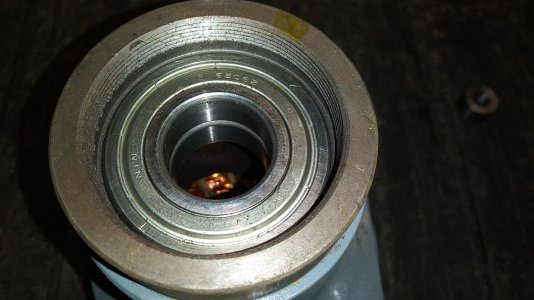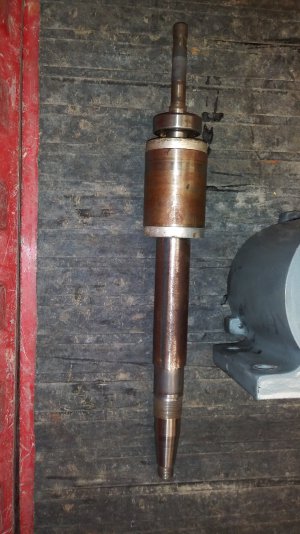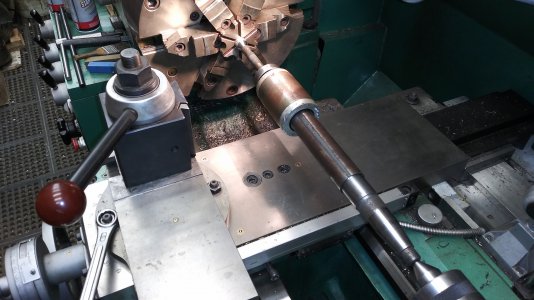- Joined
- May 23, 2017
- Messages
- 109
Flyin, The first indicator I used must be sticking, as I did this measurement today. I'm getting ~0.00025 or so runout. Not just at the taper, but at the base of the shaft about an inch from the bearing. I also pulled and pushed, and I can deflect the shaft. I looked at the ball bearing, it is not some high quality spindle bearing but a common 6206Z NTN brand. ABEC1 quality most likely.Start by getting your very best indicator on the surfaces the wheel mounts to, to see if they are round and/or have run out.
View attachment runout check.mp4
I'm starting to take the rear bell housing off the motor, and hope the bearings are not too much of a press fit, as I would like to pull the whole rotor out. And set this up on my surface plate. Then I can see if there is a machining solution to fix it. I have a tool post grinder. But then I will see what it takes to set this up and make it better not worse.
I also did this runout on the taper, and got the same result.




